Welcome to my key spec and feature comparison between Sony’s current flagship the Sony A1 and the new Sony A9III.

The Sony A1 was announced in January 2021 and took over the title of Sony’s flagship camera from the Sony A9II.
With a 50.1 megapixel stacked sensor and 8k video, the Alpha 1 was designed to do it all and without compromise.
With the introduction of the A9III Sony introduced some very significant game changing features to its former flagship camera, so you might now be questioning which camera to buy.
In this article I’ll be comparing these two cameras side-by-side and hopefully helping you to decide which one you’d prefer to be shooting with.
Table of Contents[Hide][Show]
- Summary
Key Feature Differences+−
- Sensor: Rolling Shutter vs Global Shutter
- ISO Sensitivity & Dynamic Range
- Image Processor
- Continuous Shooting Speed & Buffer
- Pre-Capture
- Shutter and Flash Sync Speed
- Autofocus
- Image Stabilization (IBIS)
- Composite RAW Shooting
- Pixel Shift Multi Shooting
- Video
- Viewfinder, LCD Monitor & Menu
- Camera Body & Controls
- Battery Life
- Additional Feature Differences
- Price
- What’s in the Box
- Summary
- Reviews
- Sony A1 Guides & Resources
Summary
With the A9III being almost two years newer than the A1 it was always going to get the latest bells and whistles, although I don’t think anyone expected it to feature a global shutter.
Along with the global shutter there’s the faster 120 fps continuous shooting, additional subject recognition and tracking, pre-capture, improved 8 stop stabilization, 4k 120p video with no crop, superior 4-axis LCD and a slightly more ergonomic body design.
With both cameras capable of performing 120 AF/AE calculations per second, autofocus performance should be very similar between them. Although the AI chip in the A9III will certainly provide some benefits when it comes to subject recognition and tracking.
For stills shooters I don’t see a big benefit of the global shutter because the stacked sensor of the A1 is so fast that distortion from the rolling shutter is rarely an issue. But if you are shooting under artificial light sources or shooting video then there are certainly a lot more benefits of having a global shutter.
The 50.1 megapixel sensor of the A1 will provide more room for cropping then the smaller 24.6 megapixel sensor of the A9III, this will probably mean that the A1 remains the preferred choice for wildlife shooters unless you are fortunate to be able to afford both.
Ultimately not every photographer will need the blistering speeds and benefits that the global shutter of the A9III provides, but if you are a professional sports photographer then it might be very appealing.
Key Feature Differences
There are some very big differences between these two full-frame mirrorless cameras, let’s take a closer look.
Sensor: Rolling Shutter vs Global Shutter
The Sony A1 features a 35mm full-frame stacked and back-illuminated Exmor RS™ CMOS image sensor with 50.1 megapixels. The below image shows the design of the A1’s stacked sensor.
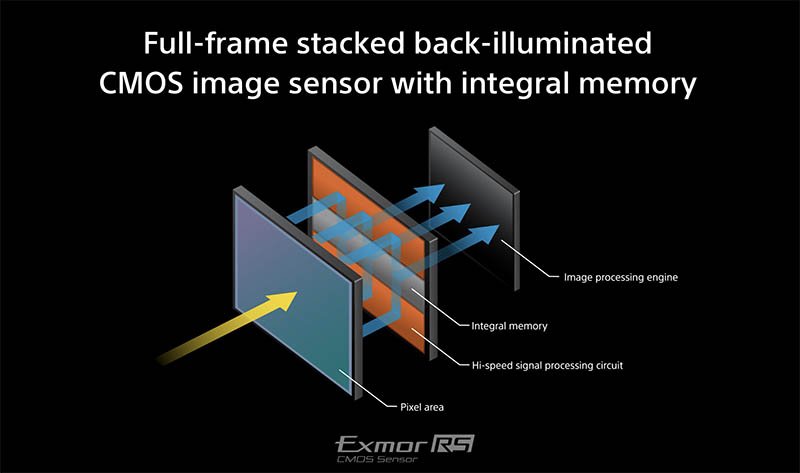
The Sony A9III also features a 35mm full-frame stacked Exmor RS™ CMOS image sensor but with a lower count of just 24.6 megapixels.
However, the number of pixels is not the only difference here because the method used by each sensor to capture the images is very different.
The A1 along with all of Sony’s Alpha cameras to date features a rolling shutter. The A9III on the other hand features a global shutter and the first to find its way into a mirrorless camera.
A global shutter can expose and read all of the pixels simultaneously, whereas a rolling shutter records images sequentially one row at a time from the top row of pixels to the bottom.
The global shutter allows the A9III to shoot up to an incredibly fast shutter speed of 1/80000 second (1/16000 second during continuous shooting).
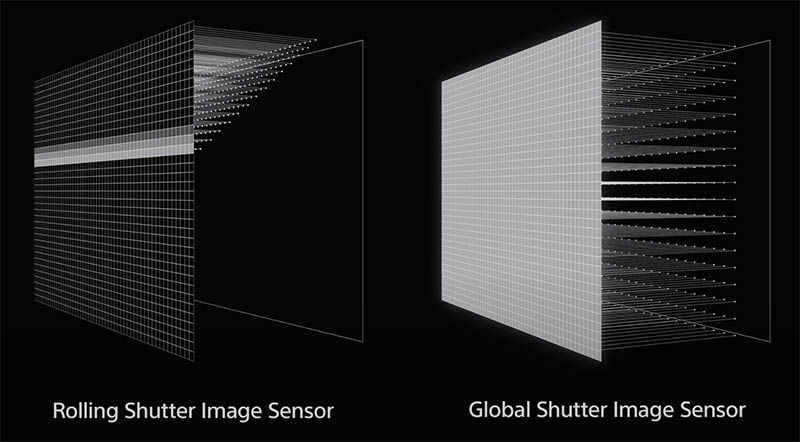
The A1 includes both a mechanical and electronic rolling shutter, but if you want to achieve the maximum of 30 frames per second you’ll need to use the electronic shutter. However, using the electronic shutter comes with some limitations.
The rolling shutter effect is one limitation, this can be seen when panning the camera very quickly and is often worse for video than still images.
However, because the A1 uses a very fast stacked sensor distortion from the rolling shutter whilst shooting still images with its electronic shutter is rarely an issue.
More of an issue is banding from artificial lights like those found in sports stadiums and also a limited flash sync speed of 1/200s with the electronic shutter or 1/400s with its mechanical shutter.
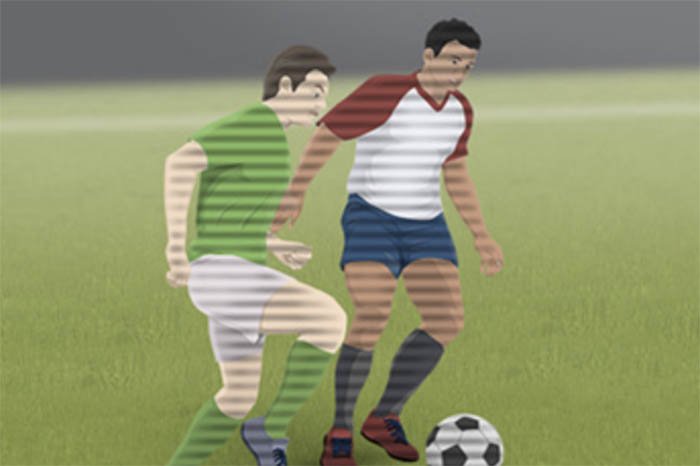
Switching from the electronic to the mechanical shutter can help to minimize the risk of rolling shutter distortion and also banding, but now you are limited to only 10 frames per second when shooting continuously.
The A9III’s global shutter solves the limitations of the rolling shutter and also eliminates the need for including a mechanical shutter, in doing so this also eliminates a potential source of failure and some excess weight.
ISO Sensitivity & Dynamic Range
The A1 has a wider ISO range than the A9III, especially when looking at the expanded ISO numbers in the table below.
What’s interesting is that the A9III has a native base ISO of 250 compared to ISO 100 for the A1, this is most likely due to the global shutter.
According to DXOMark the A1’s base ISO peaks at around 14.5 stops of dynamic range.
Sony has so far not shared any information regarding the dynamic range of the A9III and the sceptic in me suggests that this may not be as high as the A1.
| Sony A1 | Sony A9III | |
|---|---|---|
| Native ISO (Stills): | ISO 100-32,000 | ISO 250-25,600 |
| Expanded ISO (Stills): | ISO 50-102,400 | ISO 125-51,200 |
| Native ISO (Movies): | ISO 100-32,000 | ISO 250-25,600 |
| Expanded ISO (Movies): | ISO 100-32,000 |
Image Processor
Both cameras receive Sony’s latest BIONZ XR™ processor. There might be some differences under the hood but if there are Sony is not saying.
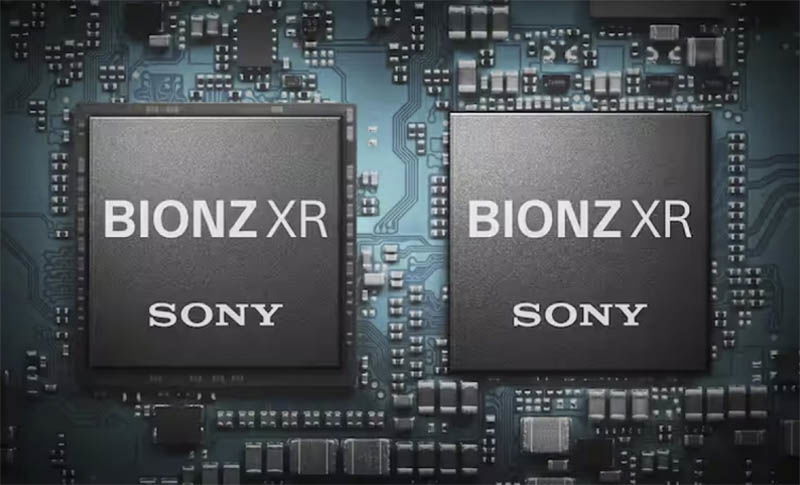
The BIONZ XR™ delivers up to eight times more processing power than previous BIONZ X™ found in cameras like the Sony A9II. This helps to minimize processing latency while boosting image processing power.
Continuous Shooting Speed & Buffer
The A1 can shoot at up to 30 fps with full AF/AE tracking and no viewfinder blackout, although to reach the maximum speed you will need to shoot in Compressed RAW or JPEG/HEIF.
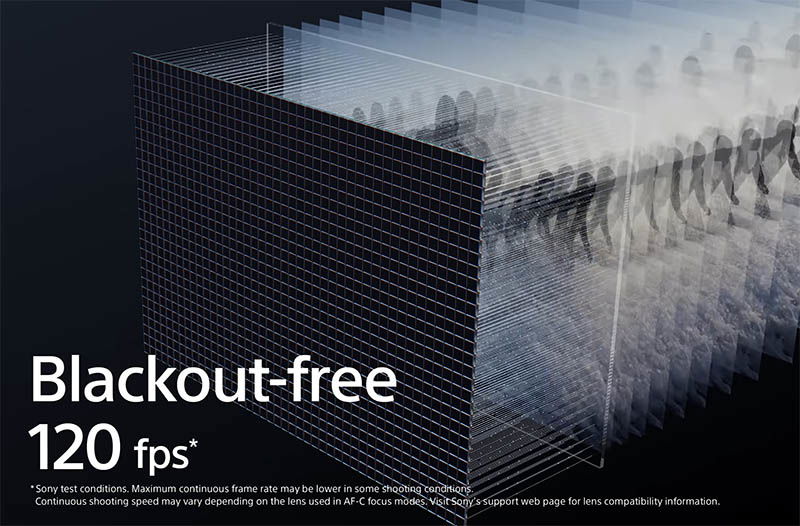
The A9III can shoot up to 120 fps with full AF/AE tracking, zero blackout and also capture high quality 14-bit RAW images in all still shooting modes.
However, the maximum speed of 120 fps can only be maintained for 192 frames (1.6 seconds) when using a fast CFexpress Type-A card. The buffer will increase for slower shutter speeds but Sony has not yet provided any figures so far.
It’s also important to note that not every E-mount lens will be compatible with the fastest speed of 120 fps.
Sony provides a list of compatible lenses for the A9III but six of these will require a firmware update and nine lenses have an aperture limitation during continuous shooting at 60 images/second or 120 images/second. The limitation means that the aperture value of the lens is fixed at the aperture value set for the first image. You need to either set ISO sensitivity to AUTO or use the P/A shooting mode to ensure appropriate exposure when the subject brightness changes during continuous shooting.
There’s also a list of lenses compatible with the A1 depending on the frame rate that you wish to shoot at. Third-party lenses are typically limited to 15 fps.
Continuous Shooting Speed Boost
A new feature introduced with the A9III that you will not find on the A1 is something called Continuous Shooting Speed Boost.
Continuous Shooting Speed Boost can be enabled by pressing a custom button such as the new C5 button on the front of the A9III next to the lens mount.
When enabled it temporarily boosts the shooting speed while shooting bursts, enabling the user to raise the frame rate to 120 fps as a key moment approaches.
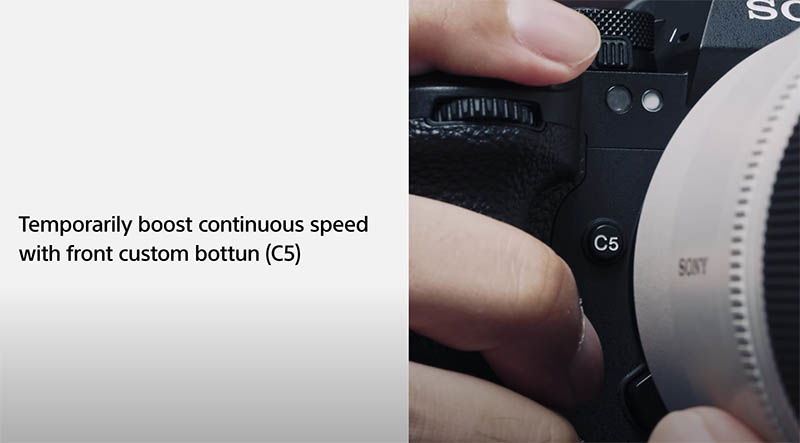
However, Sony does say that if [Continuous Shooting Speed Boost] is used and the camera is switched from low speed to high speed (60 shots per second or more) or from high speed to low speed (30 shots per second or less), there will be times when continuous shooting will be interrupted.
Pre-Capture
Pre-capture is another new feature introduced for the first time in the A9III making it possible to capture moments that occurred before the shutter was released.
Up to 120 images per second are temporarily stored while the shutter button is half-pressed, and can be captured up to one second before the shutter is fully pressed.
This makes it easier to capture split-second moments, such as images of birds taking flight, even if you aren’t quite quick enough to fully press the shutter button.
I don’t expect to see pre-capture introduced to Sony A1 via firmware update but I’d love to be wrong on this!

Shutter and Flash Sync Speed
Sony’s mechanical shutters are limited to 1/8000s on their A7 and A9 series cameras. However, switching to the electronic shutter on the A1 enables shutter speeds of up to 1/32,000s.
Thanks to its global shutter the A9III makes a giant leap ahead of the A1 here by taking the shutter speed to a very impressive 1/80,000s for stills, although this is limited to 1/16,000s when shooting continuously.
Even more impressive is that the A9 Mark III can also perform full flash sync at up to 1/80,000s when using a compatible flash unit from Sony (such as the HVL-F60RM2 or HVL-F46RM).
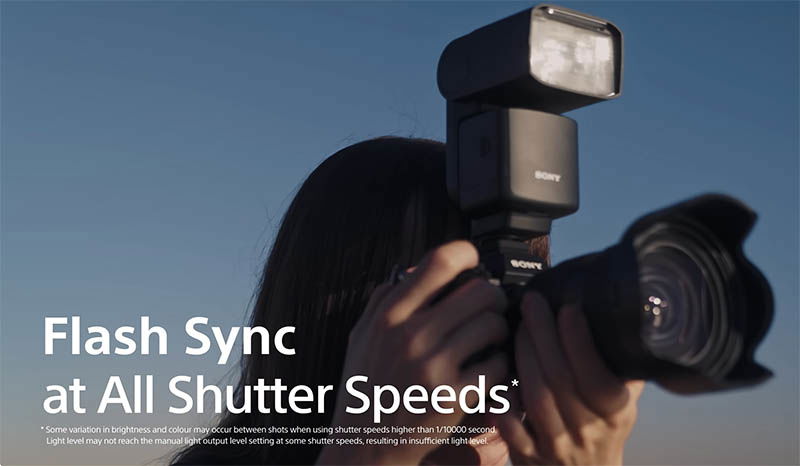
For these flashes to work correctly a software release is planned to coincide with the A9III release date in early 2024.
Important Note 1: If the shutter speed is set faster than 1/10000, brightness and color may change. Further, depending on the shutter speed setting, the light level may be insufficient, and may not reach the set manual flash output. For more information, please see the dedicated support page: https://www.sony.net/dics/ilce9m3fl/
Important Note 2: The maximum shutter speed of the A9III is limited to 1/16000s when an aperture of F1.8 or larger is used. Also 1/80000s is not available when shooting movies or when using the Var. Shutter function.
The Sony A1 has a limited flash sync speed of up to 1/200s when using its electronic shutter or 1/400s with its mechanical shutter. When shooting in APS-C mode this increases to 1/250s with the e-shutter and 1/500s with the mechanical shutter.
Autofocus
The autofocus system in the Sony A1 is nothing short of superb. It’s able to perform 120 AF/AE calculations per second, locking on to subjects in the blink of an eye and tracking them until you lose sight of them.
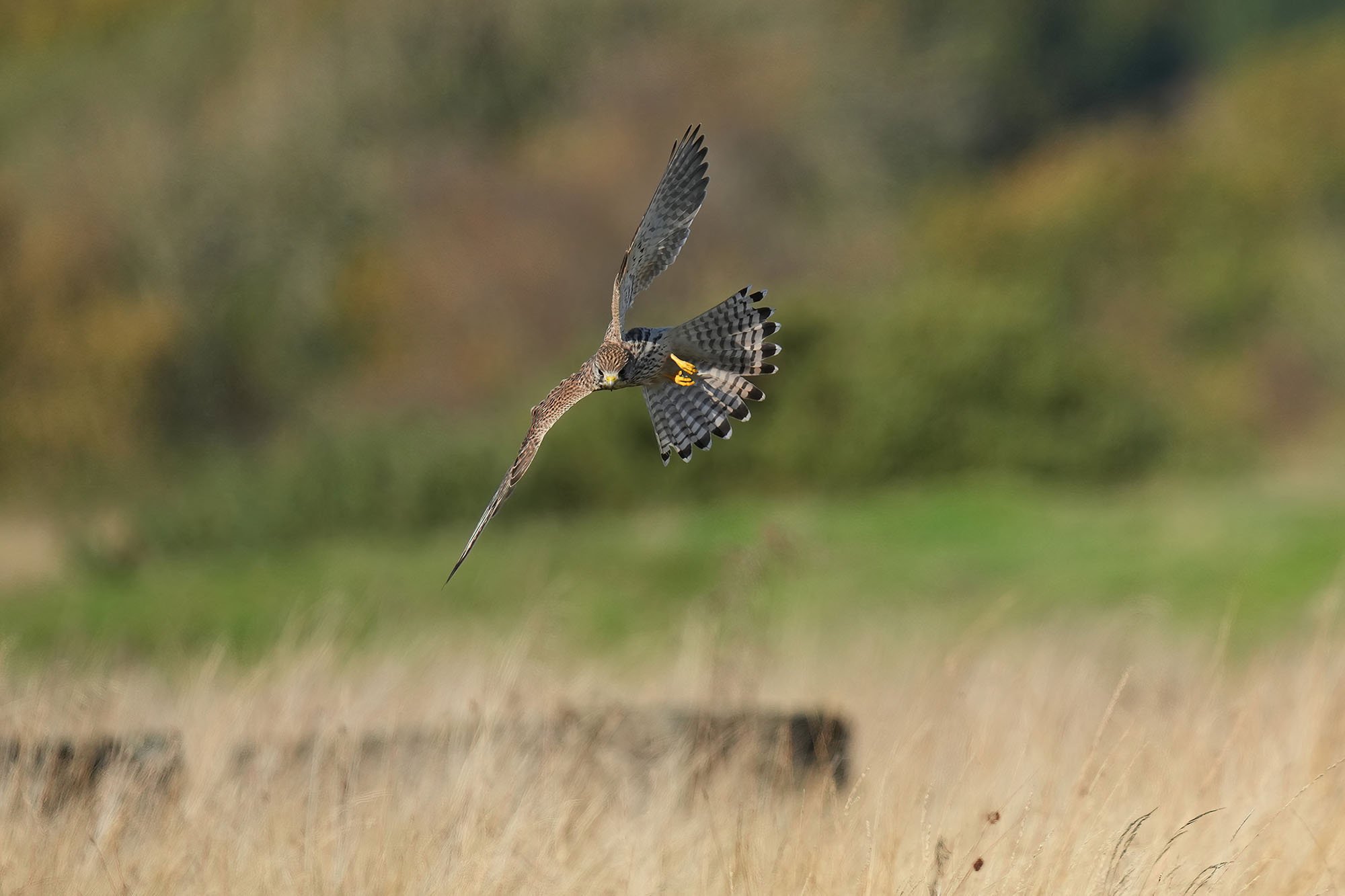
I own the A1 myself and it’s my go to camera for fast action like birds in flight. You really have to be doing something very wrong to miss the shot with this camera! My wife who isn’t a photographer can also easily capture birds in flight once I have dialed in the settings for her.
The Sony A1 features 759 phase-detection AF points covering approximately 92% of the image area.
The A9III also features 759 phase detection points covering approximately 96% of the image area. Like the A1 it can also perform 120 AF/AE calculations per second.
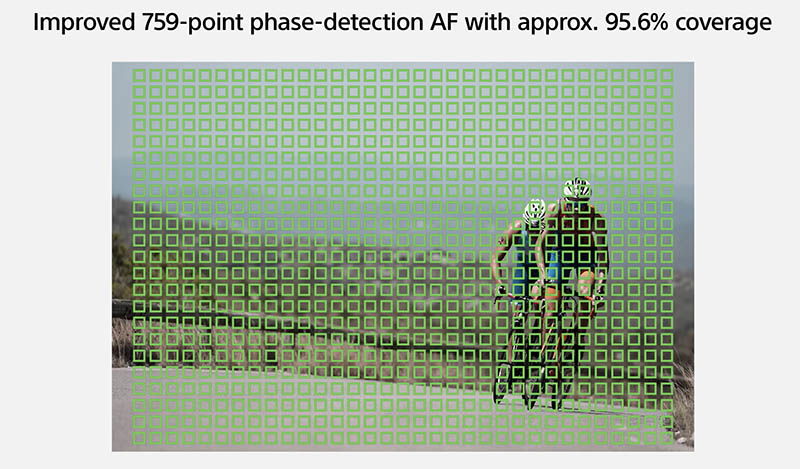
The A9III trumps the A1 in one area because it features Sony’s AI processing unit that is dedicated to processing large amounts of data to enable more accurate recognition of subjects and a wider range of subject types.

The A1 can recognize and track humans, animals and birds including eyes. The A9III features enhanced Human, Animal, Bird, Insect, Car/Train and Airplane recognition and it can even recognize helmets, such as those worn by the drivers of F1 cars.
Bird recognition has also been improved with the A9III, allowing it to more easily pinpoint the eyes of a variety of bird types as well as recognizing bird bodies. Plus, a new Animal/Bird setting eliminates the need to switch between two settings to shoot animals or birds which is unfortunately necessary with the A1.

Sony has also added two new sizes for the Spot Focus Area to the A9III: Extra Small and Extra Large. XS can be useful when shooting wildlife and trying to avoid focusing on foreground branches, for example.
Finally, the A9III has a small one stop AF advantage in low-light conditions over the A1.
- A1: -4EV (ISO 100 equivalent with F2.0 lens attached)
- A9III: -5EV (ISO 100 equivalent with F2.0 lens attached)
Image Stabilization (IBIS)
When it comes to in-body stabilization (IBIS) the Sony A1 features five-axis image stabilization that with 5.5 stops of compensation.
The A9III on the other hand comes with a new generation of sensor shift mechanism that was first introduced in the Sony A7RV and this provides a maximum of 8 stops of compensation.
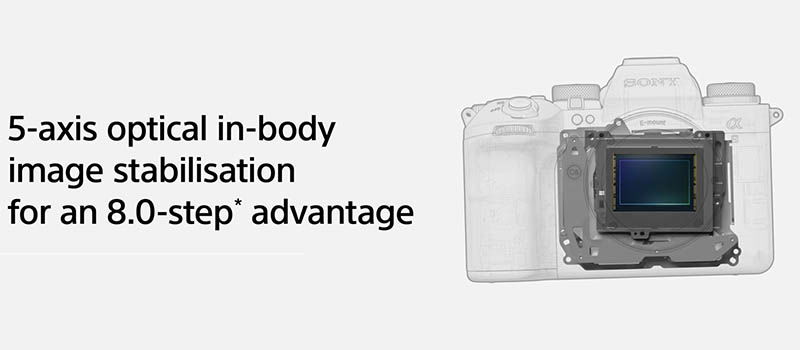
The A9III also features Dynamic Active Mode Stabilization that works in conjunction with the camera’s 5-axis optical in-body image stabilization system to improve stabilization by more than 30% by using data from the built-in gyro sensor to enhance stability during hand-held video recording.
The Sony A1 features an Active Steadyshot mode that slightly crops the sensor but enhances performance through the built-in gyro sensor. Active Steadyshot mode is not available in 8K or 4K at 120p on the A1.
Composite RAW Shooting
The A9III is the first camera to feature Composite RAW Shooting, so you won’t find this feature on the A9 Mark II.
Composite RAW Shooting captures multiple images (4, 8, 16, or 32, selectable) which can then be merged using Sony’s Imaging Edge Desktop software to create full-resolution images with very low noise.

Pixel Shift Multi Shooting
Only the Sony A1 offers a Pixel Shift Mode that allows you to capture multiple images that can be later combined using Sony’s Imaging Edge desktop software.
Pixel shift mode on the Alpha 1 gives you the choice of whether to shoot four frames or sixteen which can then be combined in post to create photos with up to 199 million pixels.
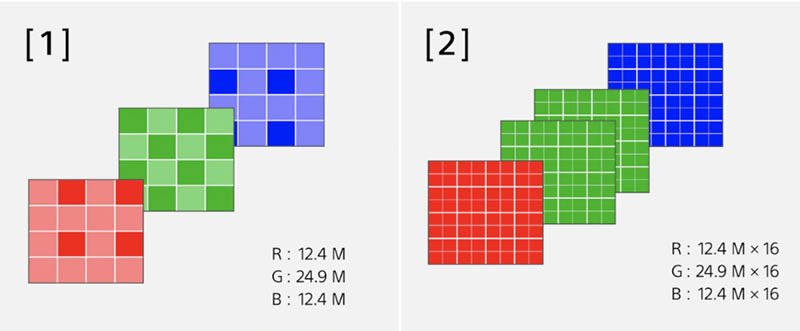
The disadvantage to using pixel shift is that your subject and surroundings need to be perfectly still and you need to be using a very sturdy tripod. Any movement whilst the images are being captured will result in a blurry image.
Video
The Sony A1 can shoot full-width 8K video at up to 30p with 8.6K oversampling. It can also shoot 4K up to 120p with a 1.13x crop and Full HD at 240fps.
The A9III does not support 8K video but it does support 4K 120p without cropping and 60p with full pixel readout and 6K oversampling.
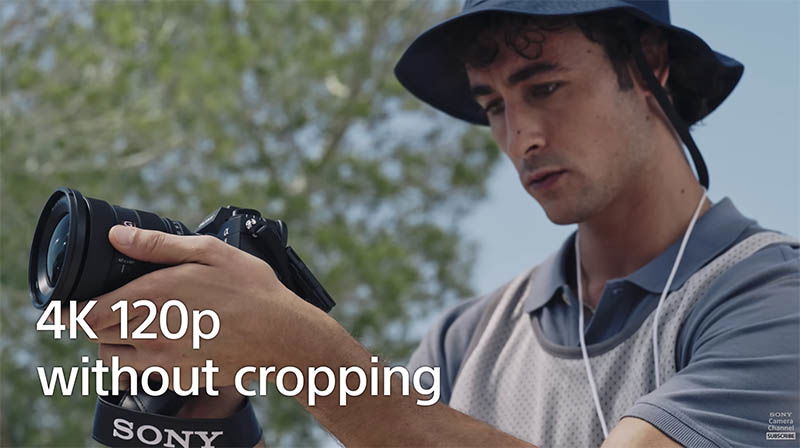
Both cameras can output 16-bit RAW via HDMI and record 10-bit 4:2:2 internally with the option of All-Intra compression up to 600Mbps.
Picture Profiles including S-Log3 and S-Cinetone are also supported by both cameras.
The A1 can only detect and track human faces and eyes when shooting video. The A9III on the other hand can also detect and track the heads/bodies/eyes of animals and birds during video recording.
The A9III also includes additional video features that are not found on the A1 such as Focus Breathing Compensation, Focus Assist, Focus Map and Auto Framing. However, a firmware update for the A1 is planned for early 2024 that should introduce Breathing Compensation support.
Viewfinder, LCD Monitor & Menu
Both cameras feature a 9.44 million dot electronic viewfinder with 0.90x magnification and a higher frame-rate option of 240 fps.
The viewfinder resolutions do however differ a little depending on the frame rate. On the A1 the viewfinder resolution becomes lower and the display magnification becomes smaller when the frame rate is set to High (120 fps) or Higher (240 fps). On the A9III you still get the full resolution at 120 fps but it is reduced for 240 fps.
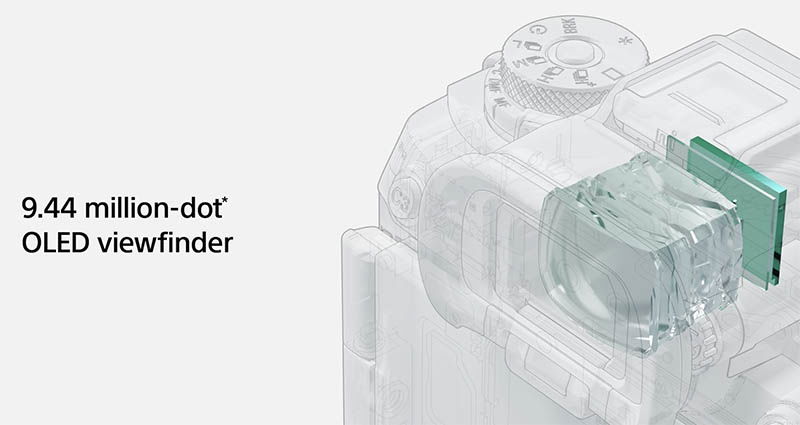
There’s a much bigger difference when we come to look at the LCD displays.
The A1 features a 3.0 inch 1.44 million dot LCD with tilt only (up by approx. 107 degrees, down by approx. 41 degrees).
The A9III really shines here because it features the same 2.1 million dot 4-axis LCD found in the Sony A7RV. Since I own the A7RV myself I can confirm that this is an excellent display.

The A9III LCD combines the utility of a conventional tilting monitor with side-opening vari-angle flexibility, allowing for unrestricted angle adjustment whether shooting vertically or horizontally. The mechanism enables the monitor to be pulled away from the rear of the body and tilted upward by up to 98°, downward by up to 40°, and swung sideways by up to 180°.
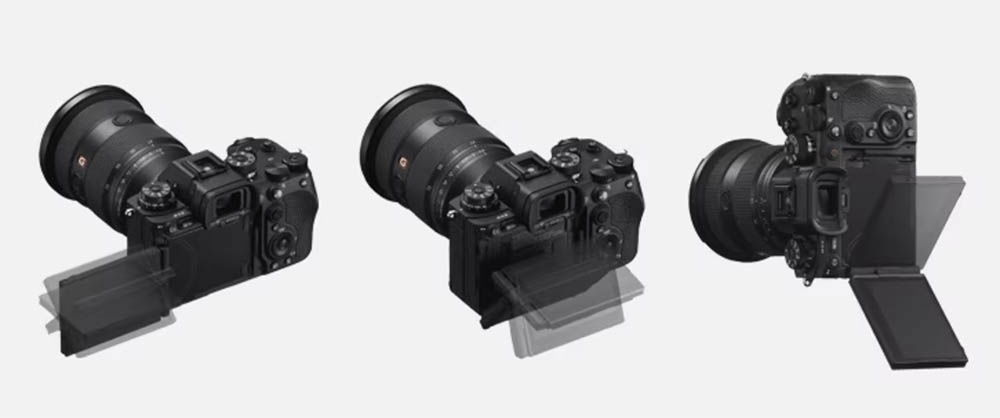
Although both camera’s LCD are touch sensitive, the A1 only features the most basic of touch controls such as touch to focus or track. The A9III improves on this significantly by adding additional touch gesture support such as touch to swipe and also enabling touch navigation and selection of menu items.

An improved group display option on the A9III also helps to improve your workflow efficiency. Images taken at up to 120 fps in continuous bursts can be defined as “groups,” making it easier to locate a specific image within a large group of images.
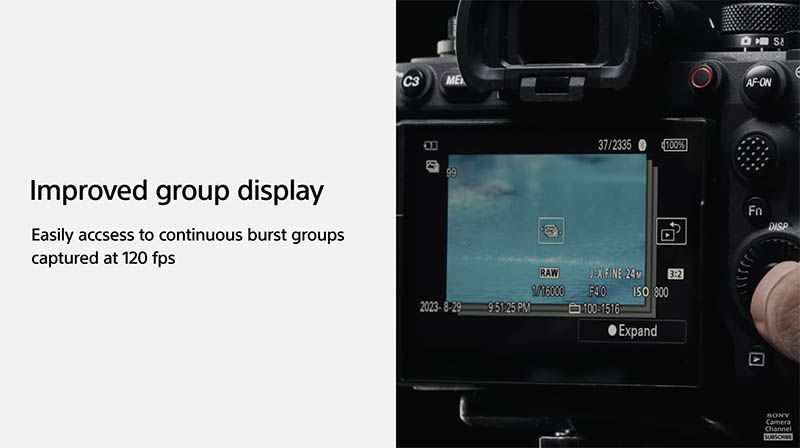
Camera Body & Controls
The A9III features a redesigned grip to help improve handling and reduce stress. The grip is a little larger than the A1’s grip and the shutter button sits at more of an inclined angle.

The A9III features an additional C5 custom button on the front of the camera and the drive mode dial can also be deactivated if you’d prefer to use a custom button or function menu instead.
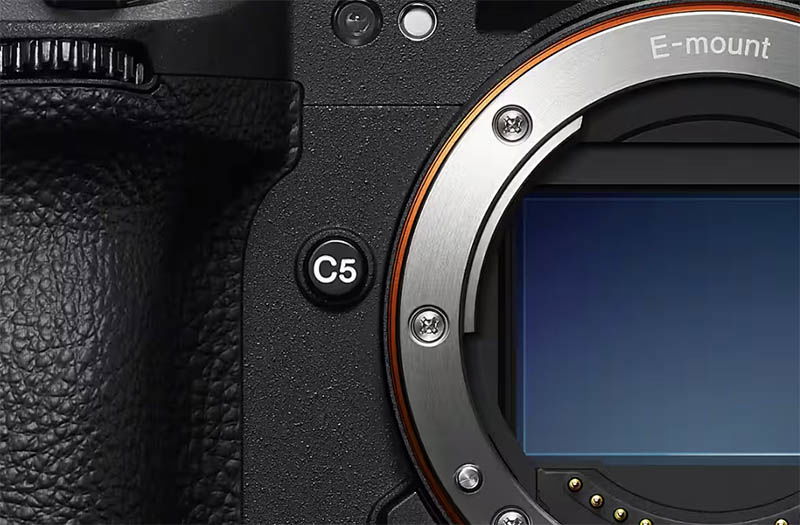
The exposure compensation dial on the A9III is now blank and also customizable in-camera. Some buttons are also a little larger than what you’ll find on the A1 and there is also a dedicated stills/movies/S&Q dial under the mode dial.
Both cameras have a full-size Type-A HDMI port, LAN terminal, flash sync terminal, USB-C port (5Gbps), micro USB port and 3.5mm mic input and headphone output jacks.
Both cameras have 2.4 GHz / 5 GHz Wi-Fi (IEEE 802.11ac) with 2×2 MIMO support that allows for high-speed data transfer. There’s also a shading curtain that protects the image sensor from dust and particles while changing lenses.
The A9III has a different vertical grip (VG-C5) to match the updated body design. It also works a little differently to the Sony VG-C4EM grip supported by the A1. The VG-C4EM treats both batteries independently and discharges one after the other, the VG-C5 grip treats both batteries as one which according to Sony improves the battery efficiency.
Both cameras have dual memory card slots that support CFexpress Type-A cards and also UHS-I/UHS-II cards. Please see my Sony A1 Memory Card Guide for my in-camera tests, I’ll be doing the same with my Sony A9III Memory Card Guide as soon as I’m able to get my hands on the camera.
The dimensions and weights of each camera are as follows:
- A1: Approx. 128.9mm x 96.9mm x 80.8mm (737 g, approx. 1 lb 10.0 oz with battery and memory card)
- A9III: 136.1 x 96.9 x 82.9 mm (702 g / 1 lb 8.8 oz with battery and memory card)
Sony A1

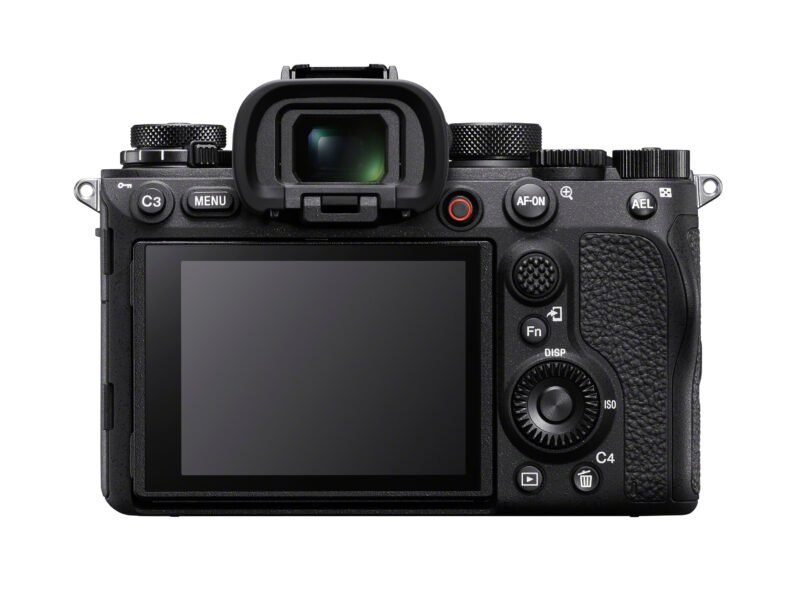
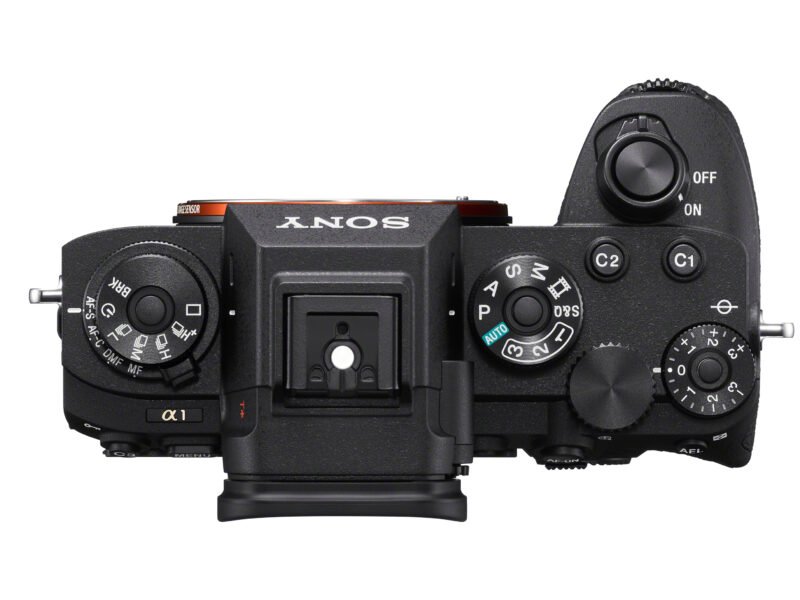
Sony A9 III
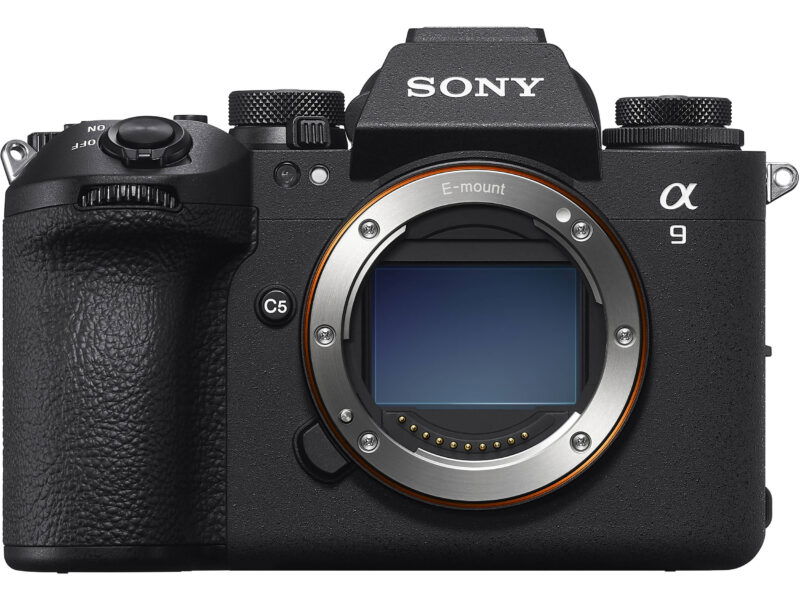
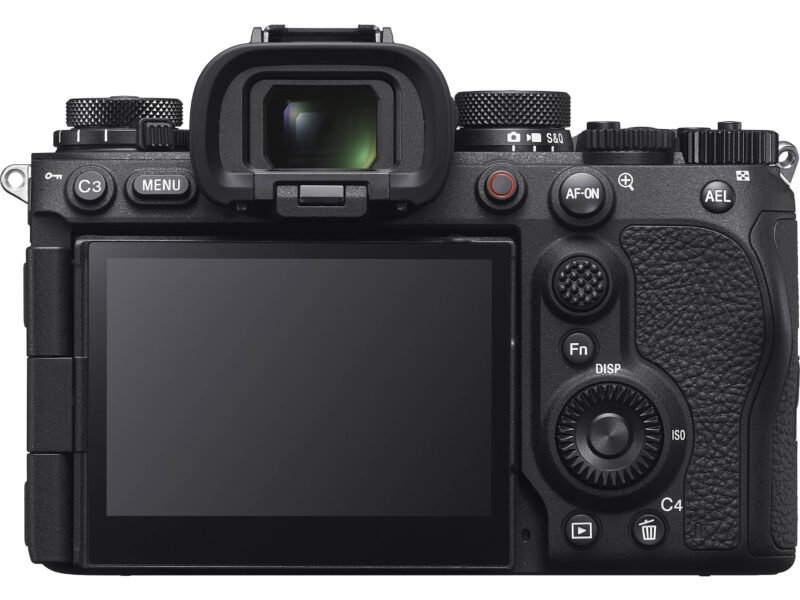
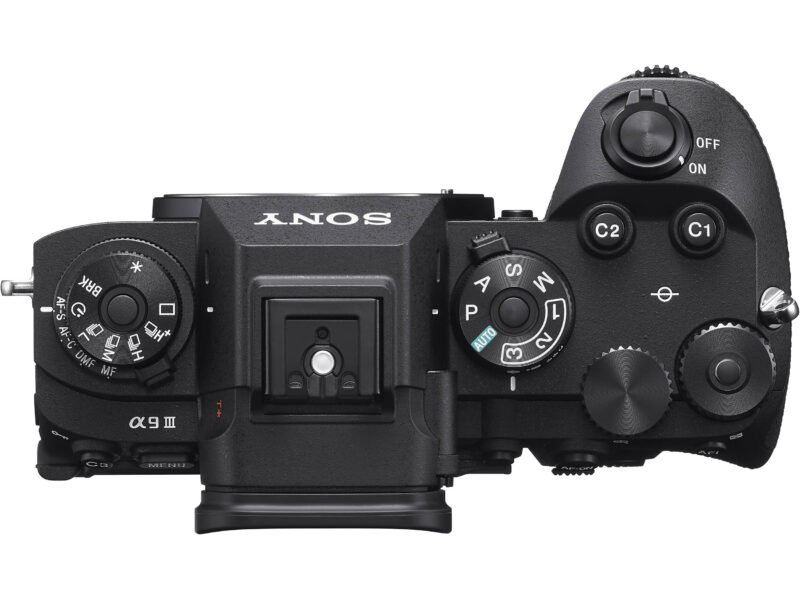
Battery Life
Both cameras utilize Sony’s NP-FZ100 battery and appear to have very similar power demands.
- A1: Approx. 430 shots (EVF) or 530 shots (LCD) CIPA standard
- A9III: Approx. 400 shots (EVF) or 530 shots (LCD) CIPA standard
Additional Feature Differences
The A9III gains easy streaming in 4K with a UVC/UAC compatible smartphone or PC via its USB connection, allowing the A9III to be used as a high-resolution webcam.
The A1 can still be used for streaming but it requires the use of Sony Imaging Edge Webcam and this unfortunately limits the resolution to 1024 x 576 pixels.
The A9III supports much easier firmware updates via memory card or Sony’s Creators App. The A1 requires a computer to install the firmware which can be challenging for Apple Mac users.
Price
The global shutter in the A9III comes with a substantial price increase of $1,500.00 over the price of the A9 Mark II and this means that the A1 is just $400 more expensive.
However, deals are now popping up for the A1 so you might even be lucky and find it cheaper than the A9III.
| Sony A1 | Sony A9III | |
|---|---|---|
| MRSP Body-Only | $6,498.00 / £6,499.00 | $5,998.00 / £6,099.00 |
| Check Price / Deals | B&H Photo | Amazon | B&H Photo | Amazon |
What’s in the Box
The box contents are very similar except the A9III does not include a USB Type-C cable.
| Sony A1 | Sony A9III |
|---|---|
| Rechargeable Battery NP-FZ100 Battery Charger BC-QZ1 Power cord Cable Protector Shoulder strap Body cap Accessory shoe cap Eyepiece cup USB Type-C(TM) cable | Rechargeable Battery NP-FZ100 Battery Charger BC-QZ1 Power cord Cable Protector Shoulder strap Body cap Accessory shoe cap Eyepiece cup |
Summary
With the A9III being almost two years newer than the A1 it was always going to get the latest bells and whistles, although I don’t think anyone expected it to feature a global shutter.
Along with the global shutter there’s the faster 120 fps continuous shooting, additional subject recognition and tracking, pre-capture, improved 8 stop stabilization, 4k 120p video with no crop, superior 4-axis LCD and a slightly more ergonomic body design.
With both cameras capable of performing 120 AF/AE calculations per second, autofocus performance should be very similar between them. Although the AI chip in the A9III will certainly provide some benefits when it comes to subject recognition and tracking.
For stills shooters I don’t see a big benefit of the global shutter because the stacked sensor of the A1 is so fast that distortion from the rolling shutter is rarely an issue. But if you are shooting under artificial light sources or shooting video then there are certainly a lot more benefits of having a global shutter.
The 50.1 megapixel sensor of the A1 will provide more room for cropping then the smaller 24.6 megapixel sensor of the A9III, this will probably mean that the A1 remains the preferred choice for wildlife shooters unless you are fortunate to be able to afford both.
Ultimately not every photographer will need the blistering speeds and benefits that the global shutter of the A9III provides, but if you are a professional sports photographer then it might be very appealing.
Reviews
For a review of the Sony A1 I’d recommend watching this review from Chris & Jordan:
There are very few reviews available right now for the A9III other than some first impressions from the launch event in New York. I’d recommend watching this one from Chris and Jordan at PetaPixel.
Complete Feature & Spec Comparison
To make sure nothing is missed here’s a complete comparison of the features and specifications of each camera.
Features
| Feature | Sony A1 | Sony A9 III |
|---|---|---|
| Announced | January 26th, 2021 | November 7th, 2023 |
| Camera Type | Mirrorless | Mirrorless |
| Sensor Size | 35mm full frame (35.9 x 24.0mm) | 35mm full frame (35.6 x 23.8 mm) |
| Sensor Type | Stacked Exmor RS™ CMOS image sensor | Stacked Exmor RS™ CMOS image sensor with global shutter |
| Resolution | 50.1 MP | 24.6 MP |
| Sensor Pixel Size | 4.16µm | |
| Pixel Dimensions | 8640 x 5760 | 6000 x 4000 |
| Image Processor | BIONZ XR™ | BIONZ XR™ |
| Low Pass Filter | No | Yes |
| IBIS (In-Body Image Stabilization) | Yes (5.5 Steps) | Yes (8 Steps) |
| ISO (Mechanical Shutter) | ISO 100-32000 | – |
| ISO (Mechanical Shutter) Expanded | ISO 50-102400 | – |
| ISO (Electronic Shutter) | ISO 100-32000 | ISO 250 – 25600 |
| ISO (Electronic Shutter) Expanded | ISO 50-102400 | ISO 125 – 51200 |
| High-Resolution Sensor Shift (Pixel Shift) | Yes | No |
| Composite RAW NR Shooting | No | Yes |
| Focus Bracketing | No | ? |
| Full Time DMF | No | Yes |
| Pre Capture | No | Yes |
| Continuous Shooting Speed Boost | No | Yes |
| XL and XS Focus Area Spot Sizes | No | Yes |
| Fastest Shutter Speed (Mechanical Shutter) | 1/8000s | – |
| Fastest Shutter Speed (Electronic Shutter) | 1/32000s | 1/80,000s but limited to 1/16,000s when shooting continuously. |
| Longest Shutter Speed | 30 seconds + Bulb | 30 seconds + Bulb |
| Continuous Shooting (Mechanical Shutter) | 10 FPS | – |
| Continuous Shooting (Electronic Shutter) | 30 FPS | 120 FPS |
| Notes for High FPS Shooting | Maximum FPS is reduced to 20 FPS when shooting uncompressed RAW files. | |
| Buffer Size (RAW Uncompressed) | 82 | ? |
| Buffer Size (RAW Compressed) | 238 | ? |
| Buffer Size (RAW Lossless Compressed) | 96 | ? |
| Buffer Size (JPEG Extra Fine L) | 182 | ? |
| Buffer Size (JPEG Fine L) | 400 | ? |
| Buffer Size (HEIF) | 146 | ? |
| Autofocus System | Fast Hybrid AF (phase-detection AF / contrast-detection AF) | Fast Hybrid AF (phase-detection AF / contrast-detection AF) |
| AF Subject Detection | Humans (Eye AF), Birds (Eye AF). Animals (Eye AF). | Humans, animals, birds, insects, cars/trains, and airplanes |
| Autofocus Points | 35mm full frame: 759 points (phase-detection AF), APS-C mode with FF lens: 759 points (phase-detection AF), with APS-C lens: 575 points (phase-detection AF) / 425 points (contrast-detection AF) | Still images: Max. 759 points (phase-detection AF), Movies: Max. 627 points (phase-detection AF) |
| Maximum Low-Light AF Sensitivity (Standardized to f/2, ISO 100) | EV-4 | EV-5 |
| Standard Flash Sync Speed | (Mechanical shutter), (Flash Sync. Priority) is (ON) or (AUTO):1/400 sec (35mm full frame), 1/500 sec (APS-C), (Flash Sync. Priority) is (OFF):1/320 sec (35mm full frame), 1/400 sec (APS-C), (Electrical shutter), 1/200 sec (35mm full frame), 1/250 sec (APS-C) | 1/80000 s (with compatible Sony flash). |
| Curtain to Protect Sensor at Shutdown (Shutter Power Off) | Yes | Yes |
| Interval Shooting | Yes | Yes (with built in time-lapse) |
| Soft Skin Effect (stills / movies) | No | Yes |
| Creative Look | Yes (10 looks with 8 adjustments for each look: contrast, highlights, shadows, fade, saturation, sharpness, sharpness range, and clarity) | Yes (10 looks with 8 adjustments for each look: contrast, highlights, shadows, fade, saturation, sharpness, sharpness range, and clarity) |
| My Image Style | No | No |
| Background Defocus | No | No |
Video Specific Features
| Feature | Sony A1 | Sony A9III |
|---|---|---|
| Maximum Video Bit Depth (Internal) | 10-bit 4:2:2 All-I | 10-bit 4:2:2 All-I |
| External Raw Video | 16-bit RAW (HDMI) | 16-bit RAW (HDMI) |
| 8K Maximum Frame Rate | 30p (no crop) | – |
| 4K Maximum Frame Rate | 120p (10% crop) | 120p (no crop) 60p (oversampled) |
| 1080P Maximum Frame Rate | 240p (no crop) | 120p |
| Recording Formats | XAVC S: MPEG-4 AVC/H.264, XAVC HS: MPEG-H HEVC/H.265 | XAVC S: MPEG-4 AVC/H.264, XAVC HS: MPEG-H HEVC/H.265 |
| Video Recording Limit | No | No |
| S-Cinetone | Yes | Yes |
| Picture Profiles (stills/movies) | Yes | Yes |
| Active Stabilization | Yes | Yes |
| Focus Breathing Compensation | No (coming with firmware update in Spring 2024) | Yes |
| Import User LUT Files | No | ? |
| AI Auto Framing | No | Yes |
| Focus Map | No | Yes |
| AF Assist | No | Yes |
| Time Code (TC) | Yes | Yes |
| In-Camera Time-Lapse Creation | No | Yes |
| Framing Stabilizer | – | – |
| Product Showcase Set | – | – |
| Cinematic Vlog Setting | – | – |
| Multiple Face Recognition in Intelligent Auto Mode | – | – |
Physical & Other Features
| Feature | Sony A1 | Sony A9III |
|---|---|---|
| Card Slots | 2 | 2 |
| Slot 1 Type | CFexpress Type-A + SD (UHS-II / I) | CFexpress Type-A + SD (UHS-II / I) |
| Rear LCD Size (Diagonal) | 7.5cm (3.0-type) type TFT | 8.0 cm (3.2-type) type TFT |
| Rear LCD Resolution | 1,440,000 dots | 2 095 104 dots |
| Articulating LCD | Up by Approx. 107 degrees, Down by Approx. 41 degrees | Opening Angles (approx.): Up 98 °, down 40 °, side 180 °, rotation 270 ° |
| Touchscreen | Yes (touch focus + tracking) | Yes (advanced touchscreen with swipe, touch focus + tracking) |
| Viewfinder | EVF | EVF |
| Viewfinder Magnification | Approx. 0.90x | Approx. 0.90x |
| Viewfinder Resolution | 9 437 184 dots | 9 437 184 dots |
| Viewfinder Frame Rate | Standard (60 fps), High (120 fps), or Hi+ (240 fps) | Standard (60 fps), High (120 fps), or Higher (240 fps) |
| Voice Memo | Yes | Yes |
| Headphone Jack | Yes (3.5 mm Stereo minijack) | Yes (3.5 mm Stereo minijack) |
| Microphone Jack | Yes (3.5 mm Stereo minijack) | Yes (3.5 mm Stereo minijack) |
| Built-in Microphone | Built-in, stereo | Built-in, stereo |
| Built-in Flash | No | No |
| GPS | No | No |
| Bluetooth | Yes (Bluetooth Standard Ver. 5.0 (2.4GHz band)) | Yes (Bluetooth Standard Ver. 5.0 (2.4 GHz band)) |
| WiFi | Yes (IEEE 802.11a/b/g/n/ac (2.4GHz band/5GHz band)) | Yes (IEEE 802.11a/b/g/n/ac (2.4 GHz band/5 GHz band)) |
| USB | Yes Type-C® Terminal (SuperSpeed USB 10Gbps (USB 3.2) compatible) | Yes Type-C® Terminal (SuperSpeed USB 5 Gbps (USB 3.2) compatible) |
| Multi / Micro USB Terminal | Yes. | Yes. |
| HDMI Port | Yes. HDMI connector (Type-A) | Yes. HDMI connector (Type-A) |
| LAN Terminal | Yes (1000BASE-T, 100BASE-TX, 10BASE-T) | Yes (1000BASE-T, 100BASE-TX, 10BASE-T) |
| NFC | – | – |
| Multi Interface Shoe | Yes (with Digital Audio Interface) | Yes (with Digital Audio Interface) |
| Battery Type | NP-FZ100 | NP-FZ100 |
| USB Power Delivery | Yes | Yes |
| Battery Life Stills | Approx. 430 shots (Viewfinder) / approx. 530 shots (LCD monitor) (CIPA standard) | Approx. 400 shots (Viewfinder) / Approx. 530 shots (LCD monitor) (CIPA standard) |
| Battery Life Video Actual Recording | Approx. 90 min. (Viewfinder) / Approx. 95 min. (LCD monitor) (CIPA standard) | Approx. 90 min (Viewfinder) / Approx. 95 min (LCD monitor) (CIPA standard) |
| Battery Life Video Continuous Recording | Approx. 145 min. (Viewfinder) / Approx. 150 min. (LCD monitor) (CIPA standard) | Approx. 145 min (Viewfinder) / Approx. 150 min (LCD monitor) (CIPA standard) |
| Weather Sealed | Yes | Yes |
| Weight (Body Only) | Approx. 652 g (1 lb 6.4 oz) | Approx. 617 g (1 lb 5.8 oz) |
| Weight (With Battery & Card) | Approx. 737 g (1 lb 10.0 oz) | Approx. 702 g (1 lb 8.8 oz) |
| Dimensions (LxHxD) | Approx. 128.9mm x 96.9mm x 80.8mm | Approx. 136.1 x 96.9 x 82.9 mm |
| Operating Temperature | 0 – 40 ℃ / 32 – 104 °F | 0 – 40 ℃ / 32 – 104 °F |

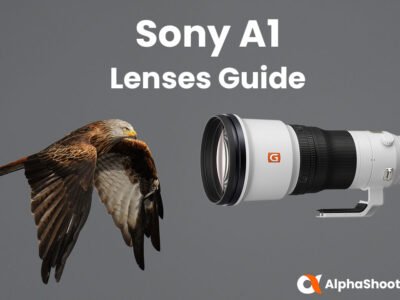
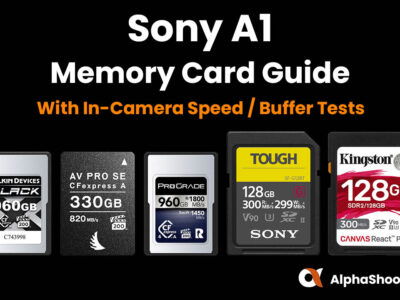

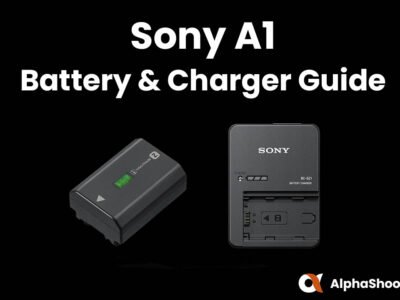
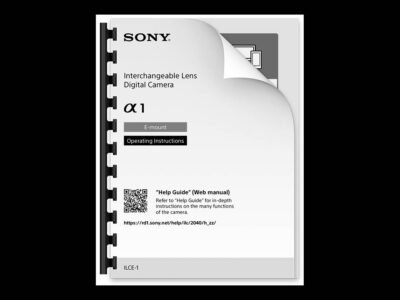
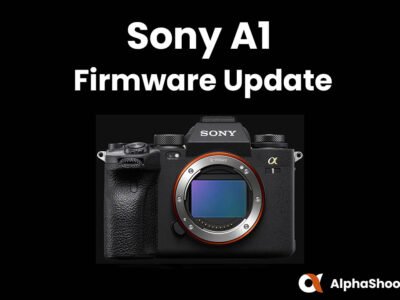

If you are shooting high school basketball or track which camera would you suggest! A1 or A9ii. Not interested in the movie or video.
Pity about pre-capture not being added to the A1
You say: “Sony provides a list of compatible lenses but these will require a firmware update (coming in December 2023).” – that’s not quite right. Only some of the lenses require a firmware update; others are compatible without one.
On the list you linked to, 23 lenses are immediately compatible, while 6 are listed as requiring an update. 9 lenses have a limitation of not changing aperture during high speed bursts.
Sadly, I own four of the six lenses which require a firmware update 🙁
Thanks again Tony. I’ve corrected and clarified that now and also linked to the firmware updates for those 6 lenses which are now available.